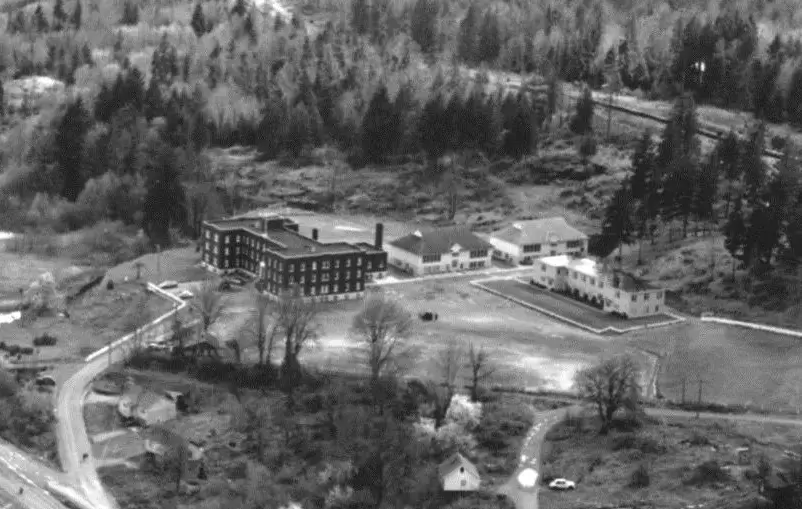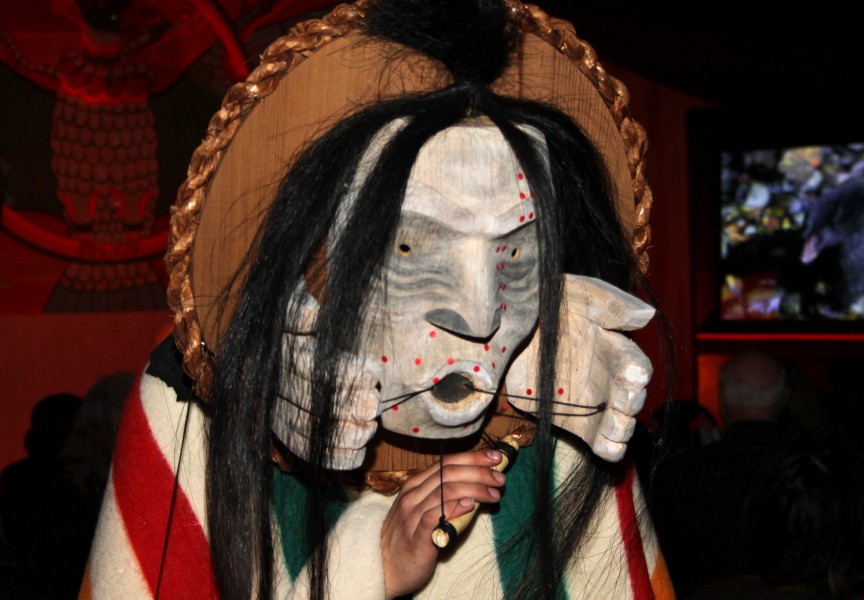The author of a bombshell article revealing medical experimentation on hungry children at six residential schools beginning in the late 1940s says the Canadian Red Cross Society did not take part in the now-infamous nutrition studies.
University of Guelph researcher, Dr. Ian Mosby, is the author of Administering Colonial Science: Nutrition Research and Human Biomedical Experimentation in Aboriginal Communities and Residential Schools, 1942-1952.
Published in the scholarly journal Social History, Mosby chronicles how an investigation of malnutrition in northern First Nations communities led to a series of questionable medical experiments, including one at Alberni Indian Residential School.
At a media conference at the AIRS site on July 17, Tseshaht Chief Councillor Hugh Braker demanded a full disclosure of facts from the federal government, along with a public apology and compensation for the victims. Braker also demanded a full accounting from the Red Cross for their role in the outrage, and an apology, if warranted.
See July 17 story: http://www.hashilthsa.com/news/2013-07-17/canada-must-apologize-nutritional-experiments-residential-school-tseshaht
But while the Red Cross was involved in the early stages of the initiative, Mosby said their involvement ended before government researchers set up shop in the schools and began delivering the “pricks” and “pokes” later cited in a series of coerced letters by malnourished Alberni students.
“To the best of my knowledge, I have not seen any evidence of their involvement in the experiments,” Mosby said.
According to Mosby, the Red Cross was asked to take part in a nutritional survey of the schools starting in 1944 through 1946.
“They simply identified malnutrition and reported to the government, saying there were nutritional problems at these schools,” he said. “That is where their involvement stopped, as far as I know.”
With the surveys in hand, the federal government hired its own nutritionists and researchers to perform the actual field studies. Mosby said he would go on the record to state that the Red Cross had no involvement in the subsequent experiments.
Ha-Shilth-Sa has contacted the Canadian Red Cross Society to request a clarification of their role in the entire initiative, along with any supporting documents.
Mosby said the confusion appears to come from references in his paper to the “Nutrition Services Division.” Leading researcher, Dr. Lionel Bradley Pett, was head of the Nutrition Services Division of the federal Department of Pensions and National Health. But the Red Cross also had a Nutrition Services Division, and that was the branch that took part in the initial assessment.
“I regret not putting the word ‘federal’ before the words ‘Nutrition Services Division.’ Unfortunately, for a few years, their nutrition services had the same name. I take full responsibility for not clarifying that sufficiently.”
Mosby said it was natural that the Red Cross, which was then in the forefront of nutrition education and promotion in Canada, would be tabbed to undertake the 1944-46 survey. Simply put, they had the skilled personnel and they had the mandate.
“Their involvement was that they were concerned about malnutrition in Canada and they had nutrition education programs.”
But in his paper, Mosby described how the program morphed from a limited experiment focused on improving the nutrition of indigenous peoples to an extended study of malnutrition using captive aboriginal children as guinea pigs.
Mosby said it was one thing to document the withholding of dental care from the children as a means of monitoring the progression of malnutrition, but he was horrified to read Alberni survivor Dolly McRae’s description of those dental services in Ha-Shilth-Sa.
“I found that to be a pretty powerful statement on the type of dental care that was being given. I had no idea that was the practice in the residential schools. That’s quite horrific, to just remove teeth rather than fill cavities.”
While the documentation is thin, Mosby said he does not have any evidence that students were not allowed to use toothbrushes or toothpaste.
“Their idea was to keep them in the state they were in before the researchers arrived, so I don’t think they would have changed anything like that.”
Mosby said in writing his paper, he had to maintain a scholarly tone, in keeping with the publication. One of the things that affected him strongly was the series of letters written by Alberni students to Nutrition Services (federal, not Red Cross) in 1952. On the surface, the children express thanks for the health care and education they were receiving, but underneath, the fear pulsates.
“I can only make the claims that I can make in my paper. I tried to be very careful in my wording to tell the story without making myself the story. I quote these letters at length because of that.
“It seems children talking about how much things didn’t hurt but then describing all the things that were done to them is a good way to say that things did hurt.”
On the Ha-Shilth-Sa Facebook page, readers, including survivors, provided comment and observations on specific elements of the July 17 Ha-Shilth-Sa story. One commenter included a reminder of the sexual abuse that was rampant at the Alberni school.
That is all part of a picture Canadians still must come to grips with, Mosby said.
“This is, for me, the real importance of this study, and I’ve said this to others. These experiments were not the worst things that were done to these students, and that is something that should give Canadians pause. If Canadians are horrified by these experiments, well, the other things that these students experienced – that is something that people need to know.”
But the theme that recurs consistently is food. In an experiment that began with the stated goal of improving the lives of Canada’s indigenous peoples, residential school children were not given enough food, and what they did receive was of poor quality.
“One of the biggest complaints from children at the residential schools, before and since, was the abysmal state of the food service,” Mosby said.
Food was also a recurring theme in those 1952 letters written by Alberni students. Mosby said he hadn’t been aware that, for Tseshaht students especially, home might only have been a matter of yards beyond the security perimeter.
“The teachers asked them to list all the foods they were looking forward to when they left the school. You can see the longing in the students’ letters for the foods that are actually nutritious and are the foods of their culture. That in itself is heartbreaking.”
At this point one has to step back and remember that the original researchers theorized that the “Indian Problem” of “shiftlessness, indolence, improvidence and inertia” might be a symptom of malnutrition rather than any inherent trait of indigenous people. Rather than approach the problem by studying the effects of a wholesome diet, however, the scientists instead kept their captive subjects in a deprived state, prolonging the misery and aggravating symptoms that had already been identified.
At the July 17 media conference, Braker condemned the attitude of the scientists and government of the day as “racism, pure and simple.” From that mindset, he said, it would be impossible for anything positive to flow from any initiative undertaken in the name of aboriginal people.
Mosby said he tried to let the words and the facts speak for themselves.
“I tried to go at length about the intellectual origins of these experiments, to give people a sense of how these government researchers viewed aboriginal people through the prism of race and the prism of the so-called ‘Indian Problem.’ I am hoping that people will read the article and see some continuities in how our media discusses aboriginal people’s problems and struggles.”
To that end, Mosby asked Social History to provide free access to the article. Readers can now access Administering Colonial Science at http://muse.jhu.edu/journals/histoire_sociale_social_history/v046/46.91.mosby.pdf.
Mosby said he hopes the focus is taken off the Red Cross and the blame placed where it truly belongs: on the Canadian government of the day and the churches that ran the residential schools. Judging by the media response, people are listening, he added.
“It is enormously heartening to see that Canadians are outraged. People need to listen to the stories of the survivors of residential schools. And if I can contribute to that in a small way, that is pretty amazing.”







